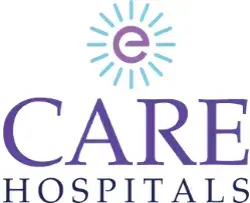-
Doctors
-
Specialities & Treatments
Centre of Excellence
Specialties
Treatments and Procedures
Hospitals & Directions HyderabadCARE Hospitals, Banjara Hills CARE Outpatient Centre, Banjara Hills CARE Hospitals, HITEC City CARE Hospitals, Nampally Gurunanak CARE Hospitals, Musheerabad CARE Hospitals Outpatient Centre, HITEC City CARE Hospitals, Malakpet
HyderabadCARE Hospitals, Banjara Hills CARE Outpatient Centre, Banjara Hills CARE Hospitals, HITEC City CARE Hospitals, Nampally Gurunanak CARE Hospitals, Musheerabad CARE Hospitals Outpatient Centre, HITEC City CARE Hospitals, Malakpet Raipur
Raipur
 Bhubaneswar
Bhubaneswar Visakhapatnam
Visakhapatnam
 Nagpur
Nagpur
 Indore
Indore
 Chh. Sambhajinagar
Chh. SambhajinagarClinics & Medical Centers
Book an AppointmentContact Us
Online Lab Reports
Book an Appointment
Consult Super-Specialist Doctors at CARE Hospitals

Robot-Assisted Cholecystectomy Surgery
- Advanced Technology
- Shorter Hospital Stay
- Pre & Post-Operative Care
- All Insurance Accepted

Chat With Our Experts
Get second opinion on Whatsapp
25 lakhs+
Happy Patients
Experienced and
skilled surgeons
17
Health Care Facilities
Top most Referral Centre
for Complex Surgeries
Robot-Assisted Cholecystectomy Surgery
Robot-assisted cholecystectomy is a robotic-assisted surgical procedure to remove the gallbladder. Robot-assisted cholecystectomy offers surgeons enhanced precision through a 3D high-definition view and 360-degree wrist motion capability. This comprehensive guide examines the benefits, considerations, and practical aspects of robot-assisted cholecystectomy to help patients make informed decisions about their surgical options.
Why CARE Group Hospitals is Your Top Choice for Robot Robot-Assisted Cholecystectomy Surgery in Hyderabad
CARE Hospitals stands at the forefront of surgical innovation with its cutting-edge robot-assisted cholecystectomy services in Hyderabad.
- Exceptional Expertise: What truly sets CARE Hospitals apart is their team of highly skilled surgeons trained in the latest robotic surgery techniques. These surgeons are extensively trained and experienced in robotic surgeries, delivering top-of-the-line surgical treatments for various conditions, including gallbladder procedures. Their expertise ensures that complex surgeries are performed with utmost accuracy, reducing complications and promoting quicker recovery times.
- Integrative Approach: CARE Hospitals employs a multidisciplinary approach for patients with co-morbidities, supported by 24/7 imaging and laboratory services.
- Patient-oriented Care: Above all, CARE Hospitals' patient-centric approach focuses on faster recovery, reduced complications, and excellent post-operative care, making it the premier choice for robot-assisted cholecystectomy surgery in Hyderabad.
Cutting-edge Surgical Innovations at CARE Hospitals
The surgical department employs state-of-the-art equipment that ensures precise and accurate procedures for every patient.
CARE Hospitals has integrated several breakthrough technologies for robot-assisted cholecystectomy procedures that substantially improve surgical outcomes. Notably, the robotic-assisted solution has shown remarkable results, reducing the maximum force required for traction by 80%. This significant reduction means less trauma to surrounding tissues during gallbladder removal procedures.
The hospital's advanced surgical systems include:
- High-definition 3D laparoscopic systems providing enhanced visualisation during robot-assisted cholecystectomy
- Advanced intraoperative cholangiography for real-time bile duct imaging
- Robotic-assisted surgical systems- offering increased precision in complex cases
- Specialised instruments for minimally invasive bile duct exploration
- Fluorescence-guided surgery enhances bile duct identification during procedures
Conditions for Robotic-assisted Cholecystectomy Surgery
Patients with the following conditions are typically considered suitable candidates for Robot assisted cholecystectomy surgery:
- Cholecystitis (acute or chronic inflammation of the gallbladder)
- Symptomatic cholelithiasis (gallstones causing symptoms)
- Biliary dyskinesia (gallbladder dysfunction)
- Acalculous cholecystitis (inflammation without stones)
- Gallstone pancreatitis
- Gallbladder masses or polyps
Despite being highly effective, robot-assisted cholecystectomy isn't appropriate for everyone, such as:
- Patients unable to tolerate pneumoperitoneum (inflation of the abdomen with gas) or general anaesthesia
- Individuals with uncorrectable coagulopathy (blood clotting disorders)
- Individuals with metastatic disease
Types of Robot-Assisted Cholecystectomy Surgery
Modern surgical technology offers patients undergoing gallbladder removal two distinct robot-assisted cholecystectomy approaches, each with unique benefits. The da Vinci Surgical System, which powers these procedures, is not a fully autonomous robot but a computer-aided system allowing surgeons to control robotic arms from a console positioned away from the patient.
- Multiport Robot-Assisted Cholecystectomy (MPRC): MPRC involves using either three robotic ports with a single assistant port or four robotic ports in total. Similar to traditional laparoscopic cholecystectomy, surgeons can place these ports according to their preference. This approach provides excellent visualisation and precise control, yet requires more operating room resources than standard techniques.
- Single-site Robot-Assisted Cholecystectomy (SSRC): SSRC represents a groundbreaking minimally invasive approach first performed on humans in April 2010. This technique utilises specialised flexible instrumentation placed through curved cannulas, enabling triangulation in the surgical field. These cannulas dock to robotic arms, allowing surgeons to operate with natural right and left-handed movements while the system corrects for instrument positioning.
Know Your Procedure
Understanding what happens before, during, and after robot-assisted cholecystectomy helps patients prepare mentally and physically for their surgical journey.
Pre-surgery Preparation
Initially, patients undergo a thorough medical evaluation, including blood tests, chest X-rays, and an EKG, to confirm their fitness for surgery. Your surgeon will explain this procedure in detail and request your written consent.
Several necessary preparation steps include:
- Stop taking blood thinners, anti-inflammatory medications, and vitamin E for several days to a week before surgery
- Avoid diet medications or St. John's Wort for two weeks before the procedure
- Stop smoking to improve recovery outcomes
- Follow fasting instructions - typically, no food or drink after midnight before surgery
Robot-Assisted Cholecystectomy Surgical Procedure
The following are general robot-assisted cholecystectomy steps:
- The robot-assisted cholecystectomy procedure typically takes 60-90 minutes to complete under general anaesthesia.
- After anaesthesia induction, the surgeon creates a small incision near the belly button, approximately 2-3 centimetres long and two to three additional "keyhole" incisions measuring about 1 centimetre in the upper right abdomen.
- Carbon dioxide gas inflates the abdomen, creating working space for the surgical instruments.
- The surgeon then inserts a laparoscope (a small camera) that projects 3D high-definition images onto a monitor.
- The surgeon controls robotic arms from a nearby console with greater dexterity than human hands.
- The surgeon removes the gallbladder through one of the small incisions.
Post-surgery Recovery
Most patients who undergo Robot assisted cholecystectomy can return home the same day or within 24 hours of surgery. Primarily, recovery involves:
- Hospital Stay: Most patients go home the same day; some may need overnight observation.
- Pain Management: Mild discomfort or pain in the abdomen and shoulders (from the gas used during surgery) managed with painkillers
- Incision Care: Keep wounds clean and dry; monitor for redness, swelling, or drainage.
- Dietary Guidelines: Start with clear liquids, then soft foods, & gradually return to a regular diet. Avoid fatty or spicy foods initially.
- Physical Activity: Walk as soon as possible to prevent blood clots; avoid lifting heavy objects for 2-4 weeks.
- Bowel Movements: Temporary bloating, gas, or mild diarrhoea may occur due to bile flow changes.
- Follow-up Appointments: Usually within a week to check healing and discuss concerns.
Most patients recover completely within 2-3 weeks and resume normal life soon after. If a patient develops a fever, persistent pain, jaundice, nausea, or signs of infection, immediately seek medical advice.
Risks and Complications
Beyond bile duct injuries, Robot assisted cholecystectomy presents several other potential complications:
- Bile leakage
- Biliary interventions
- Infection - May develop at the wound site or internally, requiring antibiotics
- Bleeding - Rare but possible, sometimes requiring additional surgery
- Injury to surrounding structures - Including intestine, bowel, and blood vessels
Benefits of Robot-Assisted Cholecystectomy Surgery
The robotic surgical system primarily provides surgeons with enhanced visualisation through a three-dimensional video platform, making it easier to identify critical structures and avoid confusion about portal anatomy.
First and foremost, robot-assisted cholecystectomy offers improved technical capabilities, including seven degrees of motion, compared to the four available in conventional laparoscopic surgery. This increased dexterity allows surgeons to perform complex manoeuvres with greater precision. Coupled with better ergonomic design, these features significantly improve the surgical experience for surgeons.
For patients, the benefits are equally impressive:
- Less pain and faster recovery - Robotic single-port cholecystectomy results in less surgical pain compared to traditional laparoscopic procedures.
- Shorter hospital stays - Patients undergoing robotic procedures experience earlier discharge from the hospital.
- Minimal scarring - Especially with single-site approaches, patients enjoy better cosmetic outcomes.
- Reduced bleeding - The precise control offered by robotic systems minimises blood loss during surgery.
- Higher patient satisfaction - Studies show patients are more satisfied with their surgical experience despite higher costs.
Insurance Assistance for Robot assisted cholecystectomy Surgery
Health insurance policies widely recognise robotic surgery thanks to regulatory support from the Insurance Regulatory and Development Authority of India (IRDAI). In fact, since 2019, IRDAI has mandated that all health insurance companies provide coverage for robotic surgeries as part of modern treatment clauses.
A comprehensive health insurance plan typically covers various aspects of robot-assisted cholecystectomy :
- Hospitalisation expenses
- Surgery fees and the surgeon's charges
- Nursing and ICU charges
- Pre-hospitalisation expenses before admission
- Post-hospitalisation care after discharge
- In some cases, ambulance services are used to transport patients
Second Opinion for Robot-Assisted Cholecystectomy Surgery
Seeking a second medical opinion before undergoing robot-assisted cholecystectomy represents a crucial step in making informed healthcare decisions. As robotic gallbladder surgery involves significant financial considerations, consulting with multiple specialists helps ensure the approach is genuinely appropriate. When consulting another surgeon, consider asking these specific questions:
- "Is my condition among those showing special benefits from robotic techniques?"
- "Could my case be completed successfully with traditional laparoscopic methods?"
- "What is your personal experience and success rate with both techniques?"
- "Will robotic surgery truly improve my specific outcomes compared to laparoscopic cholecystectomy?"
Conclusion
Robot-assisted cholecystectomy stands as a significant advancement in modern surgical care. Though more expensive than traditional approaches, this innovative procedure offers remarkable benefits for specific patient groups, especially those with complex gallbladder conditions.
CARE Hospitals leads the way in robotic surgery excellence through state-of-the-art technology and experienced surgical teams. Their comprehensive approach ensures patients receive optimal care from diagnosis through recovery.
Frequently Asked Questions
Robot-assisted cholecystectomy is an advanced surgical technique for removing the gallbladder using robotic assistance.
Robot-assisted cholecystectomy is classified as a major abdominal operation, though it's minimally invasive.
Robot-assisted cholecystectomy carries similar risks to conventional laparoscopic cholecystectomy, with specific considerations.
Robot-assisted cholecystectomy typically takes between 60-90 minutes to complete, although this may vary based on individual circumstances.
Apart from general surgical risks, robot-assisted cholecystectomy has several specific potential complications. Primary concerns include bile duct injury and leakage.
Recovery from robot-assisted cholecystectomy is typically quick compared to open surgery. Most patients return to normal physical activities within two weeks.
Robot-assisted cholecystectomy typically causes less pain than traditional open surgery.
This advanced technique works best for:
- Patients with gallstones or cholecystitis (inflammation of the gallbladder)
- Those with biliary dyskinesia or acalculous cholecystitis
- Individuals with gallstone pancreatitis
- Patients with gallbladder masses or polyps
Most patients return to desk jobs within one week. Full recovery typically takes 2-4 weeks, and returning to more strenuous activities may require 6-8 weeks.
Doctors generally do not recommend prolonged bed rest and advise early mobilisation starting the first day after surgery to help maintain muscle strength and prevent complications.
Patients with the following conditions might not qualify:
- Uncorrectable coagulopathy (blood clotting disorders)
- Inability to tolerate pneumoperitoneum or general anaesthesia
- Extensive scarring from previous abdominal surgeries
Still Have a Question?

